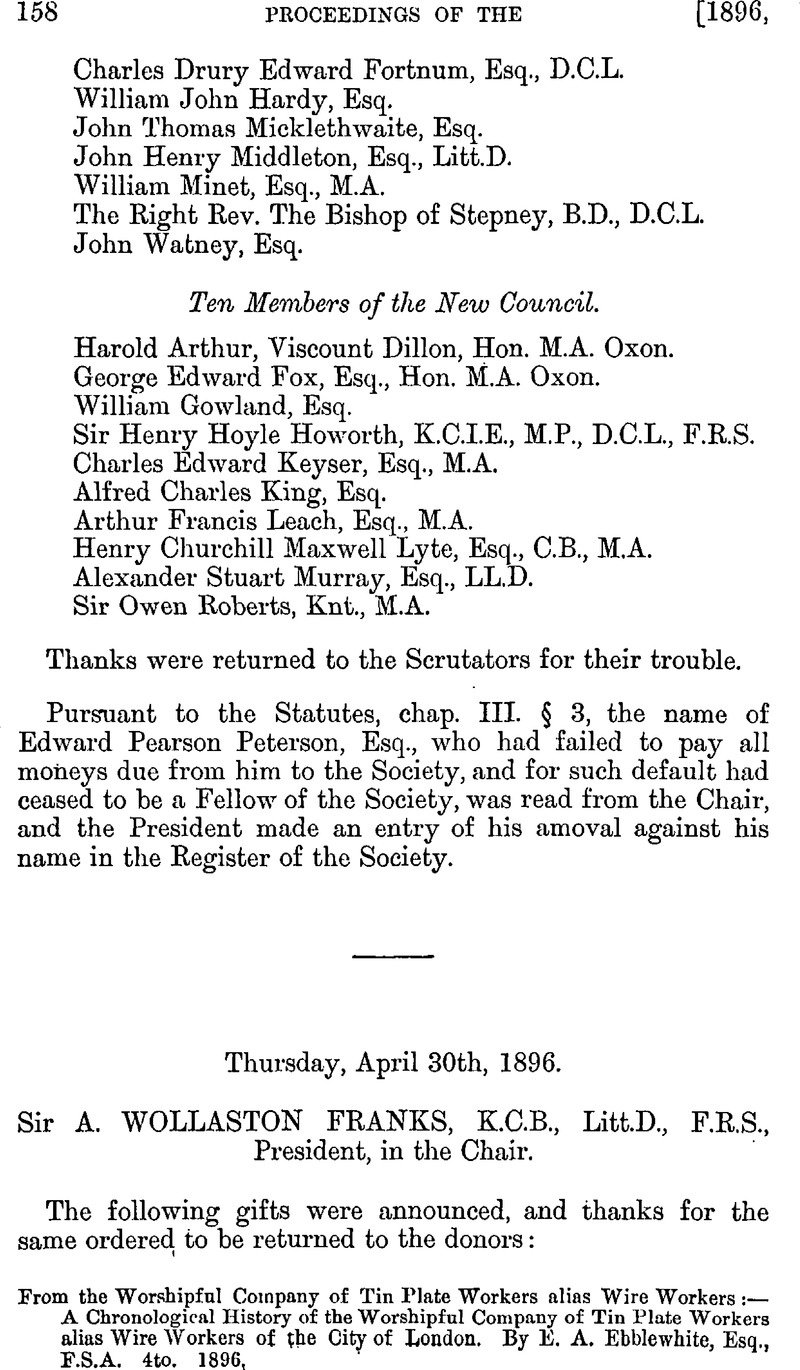No CrossRef data available.
Article contents
Thursday, April 30th, 1896
Published online by Cambridge University Press: 10 May 2010
Abstract

- Type
- Proceedings
- Information
- Copyright
- Copyright © The Society of Antiquaries of London 1897
References
page 164 note * Engraved in the Portfolio of the Monumental Brass Society, Part IV.
page 164 note † Bristol Volume of the Archæological Institute, lxxxiv.
page 164 note ‡ See ante, page 123.
page 165 note * A Description or Breife Declaration of all the Ancient Monuments, Rites, and Customes belonginge or beinge within the Monastical Church of Durham before tlte Suppression. Written in 1593. (Surtees Society 15), 28.
page 167 note * It is possible that the central panel was taller than the others by the width of a sixth board, round which the frame would of course be returned. Room would then be found for such accessories as angels holding chalices, as in the painting at St. Michael-at-Plea by the same hand, described by Mr. Waller, and probably for the sun and moon above the arms of the cross.
page 167 note † Examples of this form of decoration are not common in this country. The beautiful late thirteenth century tabula in Westminster abbey church is of course a notable example, and Mr. Micklethwaite has shown me in the same church a single fragment on the tomb of Edmund Crouchback, which was formerly elaborately decorated with painted glass panels, as were apparently the wooden sedilia on the opposite side of the presbytery. Some large pieces of similar work still exist in the canopy of the president's seat in the chapter-house at Christchurch, Canterbury, the recorded work of prior Henry of Eastry in 1304–5. The same method of decoration also appears on the gorgeous roodscreens at Southwold, Suffolk, and Cawston, Norfolk, of late fifteenth or early sixteenth century date.
page 168 note * The central panel, as I have previously suggested, may have been higher than the others to accommodate the subject painted on it. Three squares would give us a height of about 3 feet 10 inches, which is too great, but two squares and a half give 3 feet 2 inches, which, allowing for the frame, would, mean the addition of another board 9 inches wide. The banners round the frame would accommodate themselves fairly symmetrically to such an arrangement, and their original number would then have been thirty.
page 171 note * Vol. xlvii. pp. 65–77.
page 172 note * Illustrations of the Rood-screen at Barton Turf (Norfolk and Norwich Archaeological Society, 1869), 14Google Scholar.
page 172 note † Archaeologia, lvii. 229, 231, 252, 261.
page 172 note ‡ Transactions of the London and Middlesex Archaeological Society, iv. 330.




